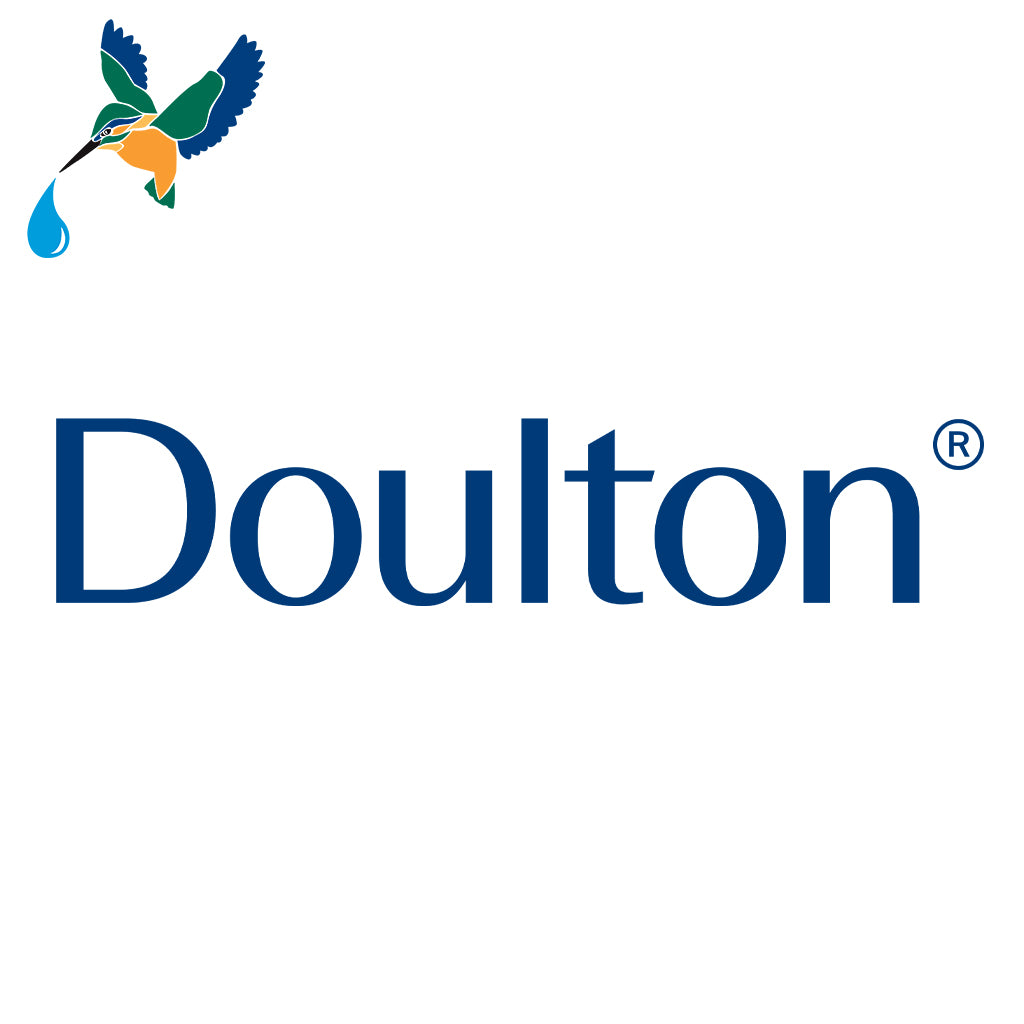| Ultracarb® | Biotect Ultra® | |
|---|---|---|
| Sterasyl® microfilter plus carbon block core and lead removal media | Sterasyl® microfilter plus carbon block core with heavy metal removal media | |
| Free Chlorine Removal • 2ppm presence to NSF Class 1 Std 42 |
95.5% |
95.5% |
| Filtration Rating (% particulate filtration efficiency) • Absolute (defined as > 99.99%) • Nominal (defined as >99.99%) Microplastics to NSF/ANSI Std 401 •Turbidity reduction |
0.9 micron 0.5 to 0.8 micron >99.9% >99% |
0.9 micron 0.5 to 0.8 micron >99.9% >99% |
| Working Pressure (for pressure filter use) • Minimum • Maximum × 30 psi in DUO & TRIO systems |
10 psi 125 psi |
10 psi 125 psi |
| Working Parameters • Working temperature range • Working pH range • Suitable for use in Gravity filter systems • Recommended change frequency |
5 – 30 (°C) 5.5 – 9.5 No 6 months |
5 – 30 (°C) 5.5 – 9.5 No 6 months |
Test Data

Performance you can trust.
Our commitment to quality is backed by internationally recognised standards, giving you complete confidence in your drinking water, every day. Doulton ceramic water filters undergo continuous, rigorous testing via external certification bodies such as NFS and WRAS. Our in-house team of experts also perform continuous testing and product development. This guarantees exceptional performance and reliability in every single Doulton and British Berkefeld product.
Below you will find some details about our testing data. Please use the buttons to navigate to your filter of choice - and for any more information or guidance, our customer service team are always happy to help. Simply email: filtersales@doulton.com
| Ultracarb® | Biotect Ultra® | |
|---|---|---|
| Flow Rate To achieve maximum performance • Litres per minute • US gallons per minute |
1.9 0.5 |
1.9 0.5 |
| Capacity Before replacement to guarantee performance+ • Litres • US gallons +Always replace after 6 months use to keep your water fresh |
2300 600 |
2300 600 |
| Ultracarb® | Biotect Ultra® | |
|---|---|---|
| Quality Approval • WRAS > Click here to read more. • NFS > Click here to read more. |
Yes Yes |
Yes Yes |
| Pathogenic Organisms Bacteria Removal* • E. Coli / Typhoid / Klebsiella Terrigena % Cyst Removal • Cryptosporidium • Giardia |
>99.99% >99.99% >99.99% |
>99.99% >99.99% >99.99% |
| Ultracarb® | Biotect Ultra® | |
|---|---|---|
| Trace Organics Removal Range of Pesticides+ • Insecticides Lindane @ 0.1ppb presence • Herbicides Atrazine @ 1.2ppb presence • Phenols TCP @ 1.2ppb presence • Polyaromatic Hydrocarbons PAHs @ 0.2ppb presence • Trihalomethanes Chloroform @ 150ppb presence |
>85% >85% >50% >95% >50% |
>85% >85% >50% >95% >50% |
| Enhanced Organics Removal • Lindane @ 2ppb presence • Atrazine @ 9ppb presence • Benzene^ @ 15ppb presence |
Pending Pending Pending |
Ave 70% Ave 90% Ave 87% |
| Heavy Metals Removal • Lead reduction pH6.5 @ 150ppb presence to NSF Std 53 • Lead reduction pH8.5 @ 150ppb presence to NSF Std 53 • Mercury reduction pH6.5 @ 6ppb presence • Cadmium reduction pH 6.5 @ 30ppb presence |
99.5% 99.5% Pending Pending |
99.5% 99.5% Ave 90% Ave 95% |
Please note:
- This product is classed as a pesticidal device due to its filtration claims, individual state legislation may limit the availability of certain products, please check state law.
- *Ceramics tested in HIS filter housing with a minimum of 5 log/100mls influent change. ^ Tested as Hexachlorobenzene
| Ultra Sterasyl® | Ultra Fluoride® | |
|---|---|---|
| Sterasyl® microfilter plus granular activated carbon and lead removal media |
Sterasyl® microfilter plus Fluoride and lead removal media with activated carbon | |
| Filtration Rating (% particulate filtration efficiency) • Absolute (defined as > 99.99%) • Nominal (defined as >99.99%) Microplastics to NSF/ANSI Std 401 • Turbidity reduction |
0.9 micron 0.5 to 0.8 micron >99.9% >99% |
0.9 micron 0.5 to 0.8 micron >99.9% >99% |
| Working Parameters • Working temperature range • Working pH range • Suitable for use in Gravity filter systems • Recommended change frequency |
5 – 30 (°C) 5.5 – 9.5 Yes 6 months |
5 – 30 (°C) 5.5 – 9.5 Yes 6 months |
| Ultra Sterasyl® | Ultra Fluoride® | |
|---|---|---|
| Flow Rate Typical Flow Rate per filter× • Litres per hour • US gallons per hour ×This may vary dependent upon the size of the housing & number of filter elements |
1 0.26 |
1 0.26 |
| Capacity Before replacement to guarantee performance |
After 6 months |
After 6 months |
| Ultra Sterasyl® | Ultra Fluoride® | |
|---|---|---|
| Quality Approval • NFS > Click here to read more. |
Yes Yes |
Yes Pending |
| Pathogenic Organisms Bacteria Removal* • E. Coli / Typhoid / Klebsiella Terrigena % Cyst Removal • Cryptosporidium • Giardia |
>99.99% >99.99% >99.99% |
>99.99% >99.99% >99.99% |
| Ultra Sterasyl® | Ultra Fluoride® | |
|---|---|---|
| Organics Removal Range of Pesticides, Herbicides, Fungicides & Pharmaceuticals |
>90% |
Pending |
| PFAS Combined PFOA & PFOS removal efficiency • 1.5ppb to less than or equal to 0.07ppb |
95% |
Pending |
| Inorganics Removal Free Chlorine Removal • 2ppm presence to NSF Class 1 Std 42 Fluoride • 1ppm presence |
>99% Not Applicable |
Ave 97.2% Up to 98.9% |
| Heavy Metals Removal • Lead reduction pH 6.5 @ 150ppb presence to NSF Std 53 • Mercury reduction pH 6.5 Ave 6ppb presence • Arsenic reduction pH 6.5 Ave 47ppb presence • Chromium reduction pH 6.5 Ave 339ppb presence • Selenium reduction pH 6.5 Ave 102 ppb presence |
up to 95% Pending Pending Pending Pending |
up to 95% Ave 86.4% Ave 97.4% Ave 99.4% Ave 93.7% |
Please note:
- This product is classed as a pesticidal device due to its filtration claims, individual state legislation may limit the availability of certain products, please check state law. Where test data shows as pending, our carbon supplier for the filter element has confirmed that the carbon will reduce the contaminant, but it has not yet been tested to the current NSF protocol, so they cannot predict the reduction capacity at this time. Therefore, the filter will aid in the removal of contaminant, but we cannot state the performance yet. * Ceramics tested in HIS filter housings with a minimum 5 log/100mls influent challenge
Want to learn more about contaminants?
With so many contaminants in your water, it can feel overwhelming when it comes to what's in your water and what you might like to filter out. If you need more guidance, our guide to contaminants page helps to demysitify the jargon.
Test Data Explained
Filtration
The act of filtration is best described as a method of separating or removing solid particles using a filter. The filter could be a simple sieve used to remove lumps from flour. Filtration methods work on the same basic principle – the material is passed though one or more apertures (holes) of a certain size to remove all particles greater than that aperture size.
Filtration Rating
When considering a water filter, you'll probably note that each water filter supplier generally advises a micron rating. The rating advises the minimum particle size that the filter will remove from the water and is usually quoted in micrometer/micron or by its abbreviation μm.
To give you some perspective on this, a micron is a unit of length that is one millionth of a meter or 10-6 m or 1/25,400 of a inch and particles of 1 micron in size need to be magnified to be seen by the human eye for example with a microscope.
With most filters the filtration rating purely relies upon size of the pores/apertures in the filter retaining particles larger than the pore/aperture size. This is known as surface filtration and if the aperture size is sub-micron the flow through the filter may be slower for a given surface area.
Size Guide Microns*
0.02 - 0.5 Viruses which can cause disease in humans
0.2 -1 0 Bacteria (range 0.2-1 micron width and 1-10 micron length
2 – 50 Protozoan Cysts – protective capsules formed by protozoa in preparation for a resting or reproductive phase
*as referenced by WQA Technical Guidance
https://wqa.org/resources/bacteria-virus/
How Important is Ceramic Depth Filtration?
Doulton & British Berkefeld ceramic filters not only use the carefully controlled pore size of their ceramic to remove particles from water, but also the wall thickness, this is known as depth filtration. Ceramic depth filtration of a specific pore size will filter out considerably smaller particles than an equivalent pore size surface filter for the following reasons: -
1. A surface filter acts as a single barrier to the passage of water.
2. The water passing through a ceramic filter has to travel much further than the distance of the ceramic wall thickness, because it has to follow the path of pores in the ceramic. The path through the filter twists and turns through sharp angles due to the complicated ceramic structure, so particles that may have penetrated the surface of the ceramic become trapped within the structure.
3. The build up of particles trapped by the ceramic cause a pre-coat on the ceramic resulting in increased filtration efficiency of the ceramic.
4. Weak Van der Waals forces attract the small particles to the ceramic, causing them to be adsorbed onto the wall of the ceramic.
To appreciate the distance and how difficult a path the water has to follow, consider that the wall thickness of the ceramic is 1000 – 2000 times greater than the pore size of the ceramic filter. Also, the pores are sharp and jagged which increases the capability of the ceramic filter to trap particles.
What Else is Important to Know About Doulton & British Berkefeld Ceramic Depth Filtration?
Unlike many filters when the Doulton & British Berkefeld ceramic filters see a reduction in flow when filtering water with high levels of sediment and turbidity, they can be removed and the surface gently cleaned to restore the flow rate.
What are Absolute and Nominal Micron Ratings?
Absolute Micron Rating:
What is meant by an absolute rating is the maximum size of particles that can pass through a filter. For instance, a 1-micron absolute filter is designed to block anything larger than 1 micron from passing through – it is usually expressed at a certain efficiency so for example:
1 Micron Absolute Filtration Defined as >99.99%
In contrast, a nominal filter provides a less precise assurance regarding the particle size that can be retained, quite often it is expressed as a size range. Again, this is usually expressed at a certain efficiency so for example
0.5-0.8 Micron Nominal Filtration Defined as >99.9%
Compatible Water Systems
Our Ultra Sterasyl and Ultra Fluoride water filter cartridges will also fit most stainless-steel gravity water filter systems on the market. If you’re looking for an improved water experience, then a British Berkefeld ceramic candle will provide you with the ability to remove up to 99% of chlorine, significantly improving taste and odour. These filter elements also reduce common contaminants including heavy metals and bacteria.
| Competitor Systems | Model |
|---|---|
| Berkey® |
Travel Berkey® |
| Newton |
6 Litre |
| ProOne |
Big+ |
| Phoenix Gravity |
6 Litre |
| Purewell |
1.5 Gallons |
Can't find your system on our list? We're here to assist in determining compatibility. Your input helps us broaden our list of supported systems. If your filtration system model isn't listed, please email us at filtersales@doulton.com with the make, model, filter housing dimensions, and any other relevant specifications.
Can't find your system on our list? We're here to assist in determining compatibility. Your input helps us broaden our list of supported systems. If your filtration system model isn't listed, please email us at filtersales@doulton.com with the make, model, filter housing dimensions, and any other relevant specifications.







